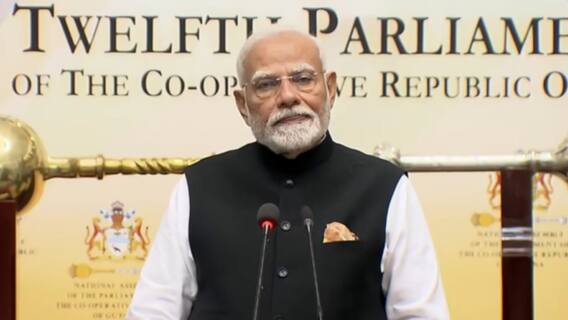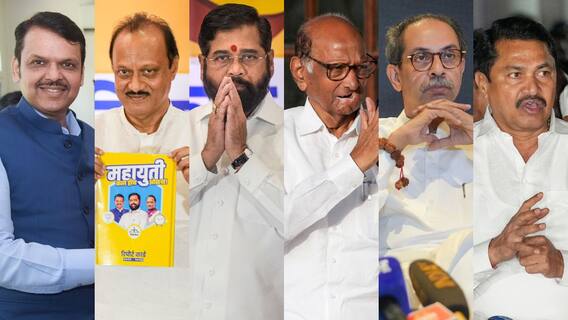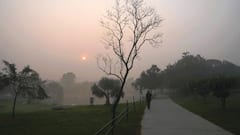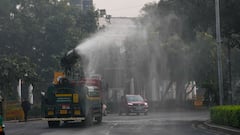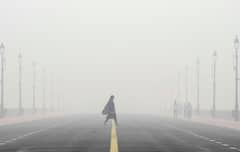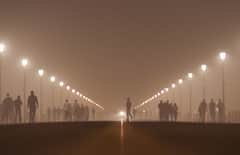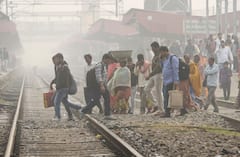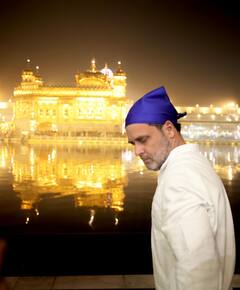Delhi Pollution: Smog Blankets National Capital As Air Quality Drops To 'Very Poor' Ahead Of Diwali
The AQI, when under ‘poor’ category, can cause breathing discomfort to people on prolonged exposure, whereas, when under ‘very poor’ category, it can cause respiratory illness on prolonged exposure.

The residents of the national capital region woke up to chilly air and a thick layer of smog on Monday (October 22), as the air quality dropped into the 'very poor' category. As cold weather settles in, pollution in all its forms is tightening its grip on Delhi, with the Air Quality Index (AQI) recorded at 307 today, according to SAFAR-India.
The AQI scale categorises air quality into six levels: 0-50 is 'good,' 51-100 is 'satisfactory,' 101-200 is 'moderate,' 201-300 is 'poor,' 301-400 is 'very poor,' and 401-500 is 'severe.' The AQI, when under the ‘poor’ category, can cause breathing discomfort to people on prolonged exposure, whereas, when under the ‘very poor’ category, it can cause respiratory illness on prolonged exposure, according to the Central Pollution Control Board (CPCB).
Worsening Air Quality In Delhi
According to a recent study led by Professor S N Tripathi from IIT-Kanpur, Delhi's air quality has seen a decline in the last week, with the AQI consistently falling into the poor category. This deterioration follows a brief period of relatively better air quality over the past three weeks. Experts are attributing the spike in pollution levels to seasonal changes and increased stubble burning.
#WATCH | Delhi: Toxic foam seen floating on the Yamuna River as pollution level in the river continues to remain high.
— ANI (@ANI) October 21, 2024
(Visuals from Kalindi Kunj) pic.twitter.com/bUV7QogrOt
However, as per recent data, stubble burning has declined this year compared to previous years. The study shows that the fire count -- an indicator of stubble burning -- has been steadily decreasing over the last five years in states such as Punjab, Haryana, Uttar Pradesh and Delhi.
But, emissions from transportation account for approximately 9.69 per cent of Delhi's air pollution, according to the Centre's Decision Support System for Air Quality Management.
The study says Delhi's air quality has worsened steadily over the last month, with PM2.5 values dipping below the National Ambient Air Quality Standards (NAAQS) only between September 27 and September 29. Outside of this short window, the air quality has remained above acceptable standards, deteriorating further each day.
In recent years, PM2.5 concentrations have reached nearly 500 µg/m³, while PM10 levels have exceeded 700 µg/m³ on a 24-hour basis during this period, the study added. (PM2.5 refers to fine particles that penetrate deep into the body and fuel inflammation in the lungs and respiratory tract, leading to the risk of cardiovascular and respiratory problems, including a weak immune system.)
According to the study, the current PM2.5 levels are already around 110 µg/m3 and this figure is expected to rise in the coming weeks as stubble burning intensifies in neighbouring states like Punjab, Haryana and Uttar Pradesh.
Why Delhi Gets Smoggy In Winters?
During the winter months, Delhi experiences severe pollution, driven by a combination of factors, such as low wind speeds, dropping temperatures, high moisture levels and the presence of pollution particles that act as surfaces for condensation.
Top Headlines
Trending News





